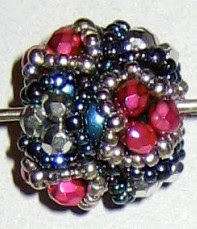
Indeed, the enabling legislation creating the two states specifies their extent strictly in terms of lines of latitude and longitude, rather than rivers, mountain divides, or other geographical features. Wyoming stretches from 41°N to 45°N latitude and from 104° 3'W to 111° 3'W longitude. Colorado's borders lie between 37°N and 41°N latitude and between 102° 3'W and 109° 3'W longitude. Originally, the lines of longitude were measured west from Washington, D.C.
However, on the surface of a sphere, although lines of latitude are parallel, lines of longitude converge as you go north or south away from the equator. So, the northern border of each state is a little shorter than its southern border. The difference for Colorado is about 21 miles.
Hence, to a first approximation, both states appear to be trapezoids rather than rectangles, though on a curved surface. A trapezoid has one set of parallel sides.
But there's an additional wrinkle that complicates the picture.
When the states were created, surveyors mapped their boundaries using transit and compass, chronometer, and astronomical readings. They also relied on data from previous surveys and interviews with residents of the affected areas. Following the appropriate lines of latitude and longitude as best as they could, the surveyors established the borders, marking them from milepost to milepost over distances stretching hundreds of miles.
The boundary between Utah and Colorado runs 276 miles from Four Corners (the only place in the United States where four states share a point) to the Wyoming border, for example. On its northward trek, the original survey ended up about 1 mile west of where the surveyors had expected to intersect the Wyoming line, indicating that the surveyed border had at least one kink in it. Indeed, subsequent surveys revealed a discrepancy between mileposts 81 and 89 (northward from Four Corners) and another between mileposts 100 and 110. The errors put kinks into what should have been a straight line.
There were similar surveying errors along other borders, including those that define Wyoming. Interestingly, once a border is defined on the ground and accepted by the interested parties, it becomes official, even if it doesn't follow the written description.
So, perhaps it's best to describe Colorado and Wyoming as polygons. And Utah can then join the group of states that are polygons. The trickier question is determining exactly how many sides these polygons have.
Colorado's legal border, for example, "is a polygon formed by a series of line segments that run between physical monuments that were put in place by . . . survey parties," Stan Wagon and John J. Watkins comment in the September College Mathematics Journal. "This polygon has hundreds of sides."
It's time to take a closer look at the borders and start counting. The main kink in the Utah-Colorado border is visible with a few clicks on a Google map, as is an abrupt jog in the border between Colorado and New Mexico.
References:
2007. Which states are polygons? College Mathematics Journal 38(September):259.
Case, W.F. Why does the eastern border of Utah have a kink in it? Utah Geological Survey.
Van Zandt, F.K. 1976. Boundaries of the United States and the several states. U.S. Geological Survey Professional Paper 909.





